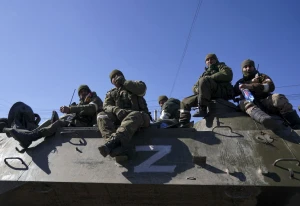
Main perpetrators have not been punished – journalist Kazanzhy on deadly clashes in Odesa on May 2, 2014
Journalist Zoya Kazanzhy, the initiator of the May 2 group, reveals little-known facts about anti-Maidan activists and their role in the tragedy
She spoke about this on Espreso TV.
"There is no progress for obvious reasons. First, I don't think anyone is actively engaged in this, all possible investigative actions and all verdicts, including acquittals, have already been delivered. Moreover, two people - one of them is a Russian citizen and the other is Serhiy Dolzhenkov (Captain Cocoa), who led this anti-Maidan march - were exchanged in 2017 or 2018, I think. I just wanted to say one important thing, which is broadcast almost everywhere: people ran into the Trade Union Building - they didn't just run in on their own, they were actually ordered to run there by the anti-Maidan leaders. Because this Trade Union Building was like an anti-Maidan base. They went to the toilet there, they stored food there, they stored combustible materials there," Kazanzhy said.
Kazanzhy noted that the distance between Hretska Square and the House of Trade Unions on Kulykove Pole is about seven kilometers. This explains why the anti-Maidan supporters chose this route for their retreat, as well as the fact that they used the building's roof to launch Molotov cocktails.
"You introduced me as the initiator of the May 2 group. It happened that I was involved in its creation when it was important for Odesa to understand what happened and who was to blame, and how this scenario was implemented. We have no doubt that the scenario was there, that what happened in Donetsk and Luhansk (especially in Donetsk) was waiting for Odesa. Because 3 hours after the deaths, a narrative appeared in the Russian information space, the phrase ‘Odesa Khatyn.’ They were preparing, they were implementing it all, and when we talk about Fuchedzhi, the court put him on the wanted list, sentenced him in absentia, but he is a servant who carried out all the orders of the authorities, and the main figures have not been punished," the journalist explained.
According to her, the Kyiv Investigation Group has been formed and disbanded, and its leaders have changed. She also noted that on the morning of May 3, 2014, the central streets of the city were cleared of traces of the previous day's events.
"I don't know any another case where all the evidence was destroyed so quickly and everything was clean. You probably remember the basement of the House of Trade Unions, when they said it was filled with corpses, so it was open, it was not even sealed. Here, the more years pass, the more we understand, the more we understand other events, we already have the war, and we understand that there are many such dark spots that still exist," summarized the initiator of the May 2 group.
For reference. The May 2, 2014 confrontation was a massive riot that took place in the city of Odesa. It began when approximately 2,000 people gathered for a peaceful march advocating for the unity of Ukraine on Hretska Square in the city center. Clashes erupted between this group and around 300 pro-Russian individuals who supported the idea of federalization of Ukraine, a concept actively promoted by the Russian Federation at the time. The situation escalated after the death of two pro-European activists who were shot during the clashes. Subsequently, the confrontation moved to Kulykove Pole, where the remnants of a pro-Russian tent city had been located before being partially removed by local authorities the previous day. Approximately 300 federalization supporters barricaded themselves in the House of Trade Unions. Both sides threw Molotov cocktails at each other, causing a fire to break out inside the building, killing 42 local pro-Russian activists (who were injured and thrown out of a window).
- News











































